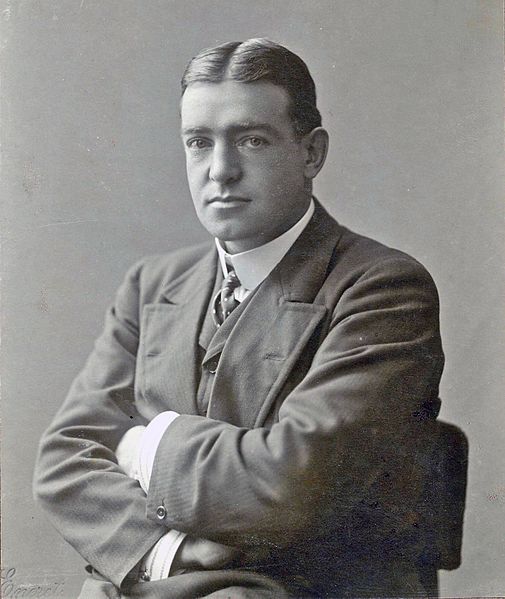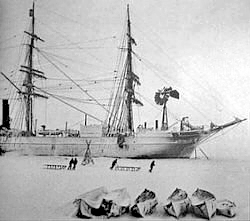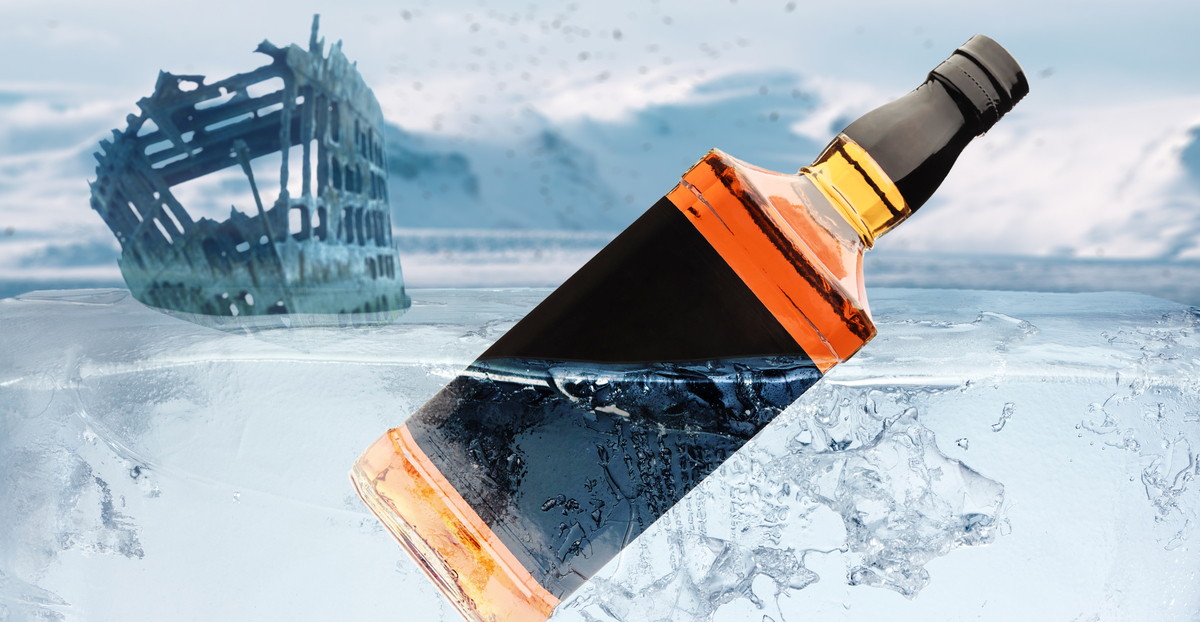Ernest Shackleton probably never thought he’d have a whisky named after him. He is well-known for his famous and ill-fated 1914-1917 Endurance expedition to explore Antarctica. He and his crew were forced to abandon ship when the Endurance became trapped in the ice. What followed was a harrowing period in which most of the crew struggled to survive in one spot for nearly 2 years, while Shackleton and a couple of others went in pursuit of rescue.
He did eventually find the aid he sought, and miraculously, nearly everyone survived the ordeal and returned home. This was his 3rd expedition to the Antarctic. His second was the 1907-1909 Nimrod expedition in which the whisky of our story was found. His life ended by heart attack in 1922, while trying to make one last expedition to the southernmost continent, and was buried in South Georgia, the part of the world that fascinated him so much.

Nearly a century after Shackleton’s end, archaeologists found something very unexpected underneath the floorboards of the hut, which used to be his base camp for the Nimrod expedition –several bottles of Scotch whisky. The MacKinlay scotch was originally bottled in 1898, after being aged for 15 years, according to the CBC. Needless to say, it’s aged a lot more since then.
It was found with three cases of scotch and two cases of brandy, left under the floor of the hut at Cape Royds, where the explorer was forced to leave them behind.
Inspired by the spirit supplied to the 1907 British Antarctic Expedition, our whisky is expertly crafted using a selection of the finest Highland Single Malt Scotch Whiskies; a fitting complement to adventures no matter how big or small. #shackletonwhisky pic.twitter.com/DGdTfG95xX
— Shackleton Whisky (@The_Shackleton) May 3, 2019
The cache of bottles was first discovered by conservationists in 2010 and had been frozen solid. The bottles were still intact, however, and liquid could be heard sloshing around in them when they were agitated. The alcohol content of the whisky was high enough to withstand even the -30 Celsius temperatures of the Antarctic without freezing.

According to British news outlet Express, the crates were left in place, encased in ice, for several more years until the best tools could be brought to the site to extract the crates since they were worried about damaging the contents. Once the find was successfully removed from its ice trap, the bottles were allowed to defrost slowly, over the course of two weeks.
In 2007, a century after the Nimrod expedition, three cases of perfectly preserved whisky were discovered, frozen into the ice beneath Shackleton’s base camp at Cape Royds. #openforadventure #shackletonwhisky pic.twitter.com/8sm54SbTXT
— Shackleton Whisky (@The_Shackleton) June 20, 2018
The recipe for the venerable scotch has long since been lost, and MacKinlay has been purchased by another distillery. Even so, Whyte and MacKay, the parent company, chartered a private plane to have the bottle brought first to Christchurch, New Zealand, and then on to Scotland in hopes that they could analyze the contents.
One of the lead blenders at Whyte and McKay, Richard Paterson, told one news outlet that he was going to bring it to room temperature, pour a bit, and swirl it around to see what its scent could tell him. If the whisky could be fully analyzed, they planned to recreate the long-lost recipe.
They were able to withdraw a sample of the scotch by inserting a syringe through the cork, and, after completing their analysis, they were able to produce a limited-edition run of 50,000 bottles of the recreated blend. In doing so, they have arguably made it possible for scotch lovers to taste history literally. Tasting the venerable distillation wasn’t cheap, however, as the bottle of that run sold for about $157 each. Five percent of the price of every bottle sold goes back to the Antarctic Heritage Trust, to help fund their work.
Once their analysis was complete, and the find had yielded all the information that could be extracted, the bottles were flown back to Antarctica, in two containers with combination locks, so they could be returned to their original location. However the recipe lives on in Shackleton Whisky, a specialty brand that can still be bought.
Related Article: The Unbelievable Endurance and the Crew that Survived an Antarctic Shipwreck
Lizzie Meek, who was one of the archaeologists from the Antarctic Heritage Trust, who made the original discovery, reminisced about its pleasant aroma, saying that in her line of work you sometimes dealt with things which were in an advanced state of decay and didn’t smell very nice, so it was a pleasure to get to work with something which had a lovely scent. She also remarked that the scent was very strong.
